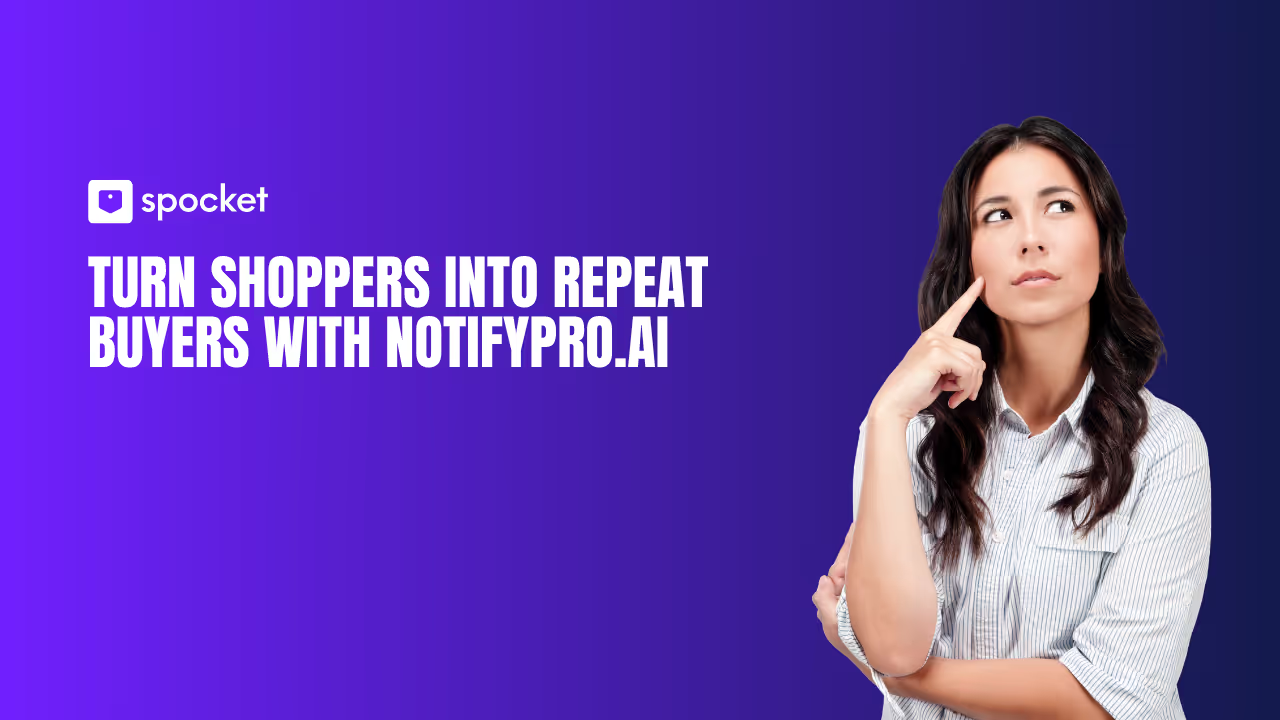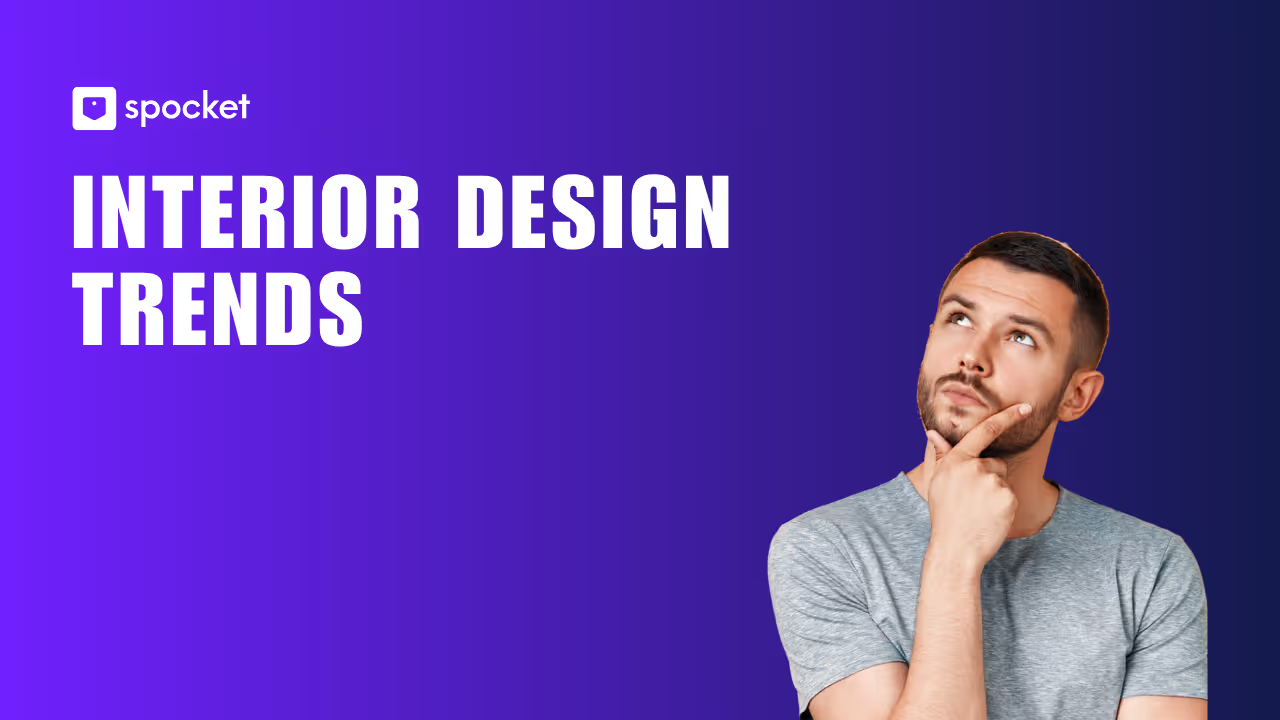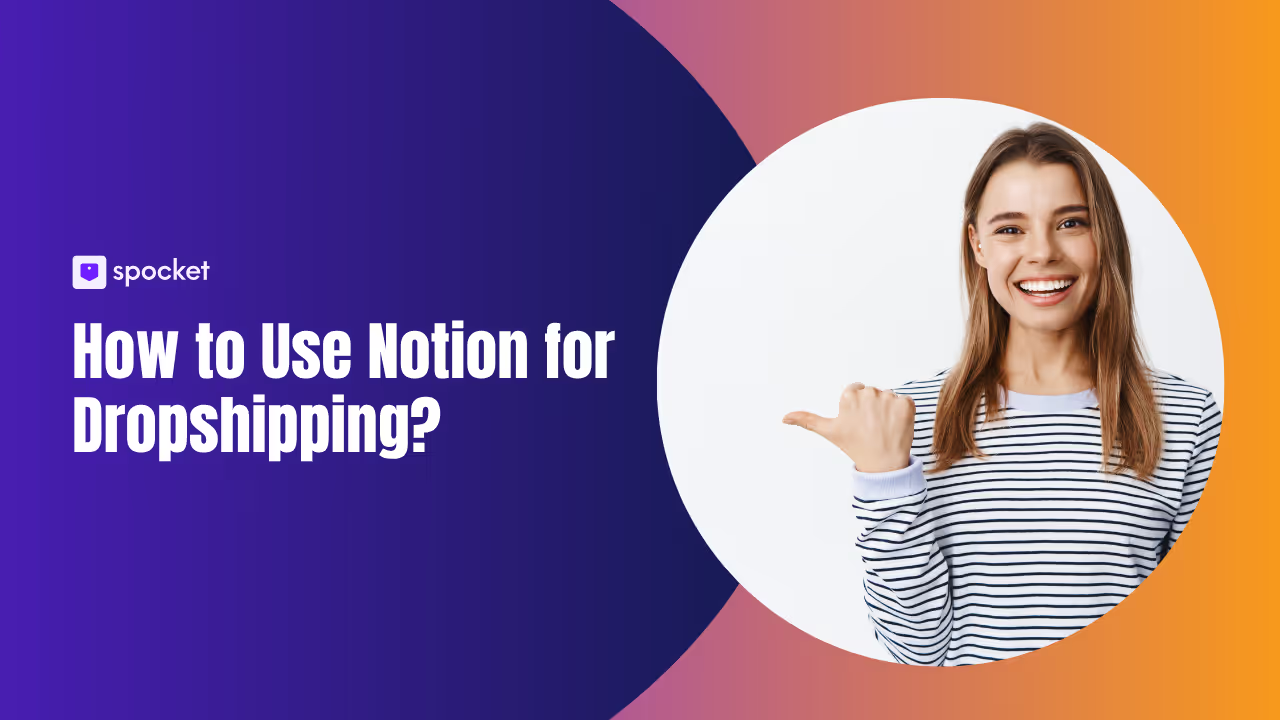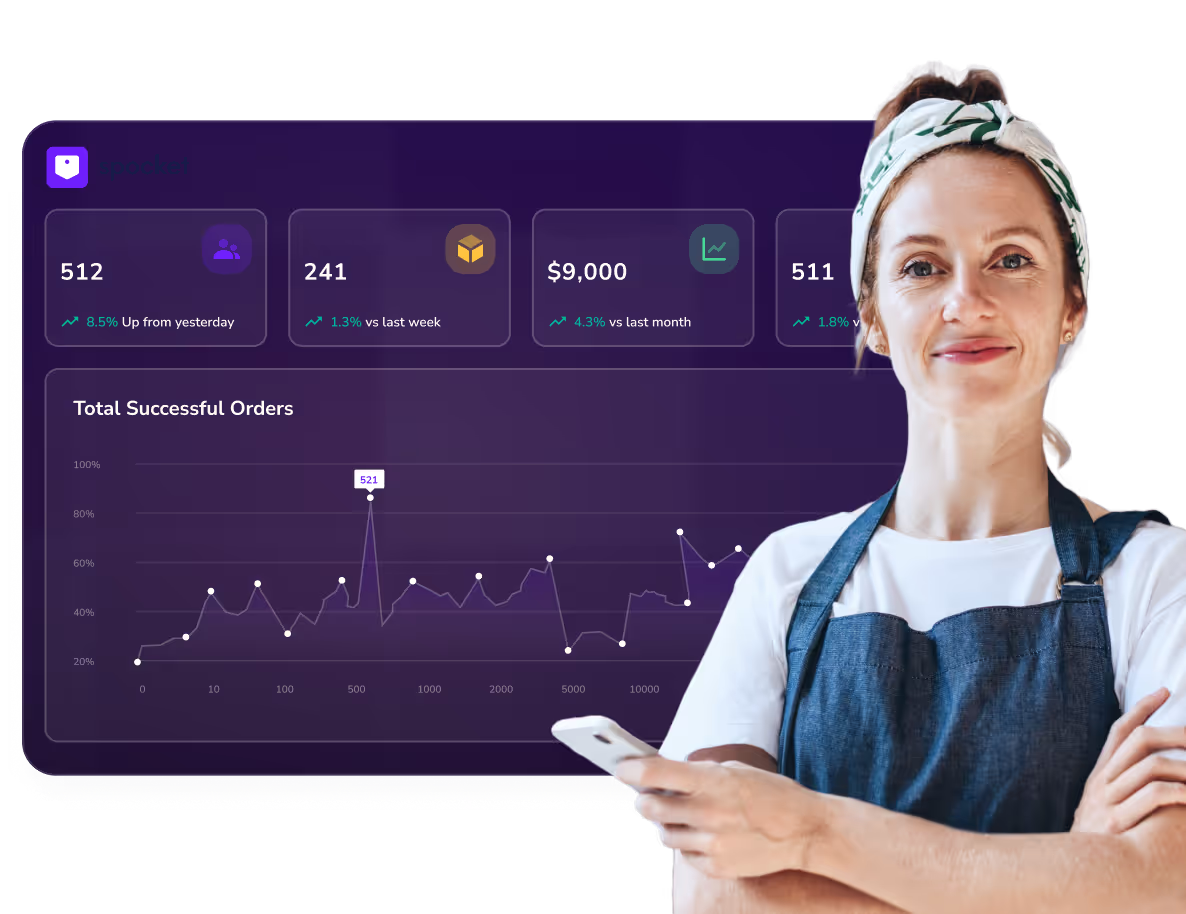Getting someone to buy from your store once is exciting. But the real challenge begins after checkout: how do you make sure they come back again? In ecommerce, that second purchase is often the hardest step, and most stores lose customers before loyalty can take root.
This is where smart automation changes the game. With a customer engagement tool dropshipping, AI notification tool for e-commerce, your store connects with shoppers at the right moment without added effort. A low-stock alert can spark urgency, a back-in-stock message can revive intent, and an AI-powered reminder can feel almost like a personal nudge.
NotifyPro.ai makes these moments seamless. Instead of sending generic blasts, you create timely, relevant touchpoints that turn one-time shoppers into repeat buyers. Over time, those small, well-timed messages lead to bigger sales, stronger relationships, and growth that compounds with every order.
Customer Retention in Ecommerce—What Actually Drives the Second Purchase
Winning a first order is only half the battle. The real test is getting that customer to buy again, because repeat purchases are where loyalty and long-term revenue begin. Let’s break down what actually pushes shoppers past that crucial second-purchase barrier.
The Retention Flywheel in Ecommerce
Think of retention as a loop. A customer makes a purchase, you collect more data about their behavior, and with that knowledge, you can personalize the next touchpoint. The better the experience, the more likely they are to buy again. Over time, this flywheel spins faster, making growth more predictable.
While email and SMS can fuel this loop, they often miss the moment when intent is highest. Notifications step in here—they’re immediate, targeted, and tied to real actions like browsing a product or waiting for a restock.
Dropshipping Realities That Impact Loyalty
For dropshipping stores, the challenge is sharper. Suppliers run out of stock quickly, shipping timelines shift, and customers can lose trust if they feel kept in the dark. That makes proactive communication essential.
Back-in-stock alerts rebuild intent when an item returns, low-stock messages create urgency before it’s gone, and pre-order flows keep momentum alive even when supply chains wobble. These strategies don’t just recover sales; they also build confidence that your store is reliable despite the unpredictability of dropshipping.
Shopify Notification Plays That Create Habit
Turning shoppers into repeat buyers isn’t about random promotions—it’s about timely, relevant touchpoints that fit into their buying journey. Shopify notifications like back-in-stock, low-stock, pre-order, and AI-driven interest alerts work because they connect intent with action at just the right moment.
Back-In-Stock: Recover High-Intent Demand
Few things frustrate shoppers more than finding a product they love, only to see it’s sold out. A back-in-stock alert flips that frustration into anticipation. By letting customers sign up for a restock notification, you capture intent instead of losing it.
When the product returns, your alert reignites excitement and gives buyers the chance to act quickly. These messages work best when they’re direct, simple, and urgency-driven—“It’s back, and stock won’t last long.”
Low-Stock FOMO: Convert Fence-Sitters Without Spam
Scarcity is one of the most powerful triggers in ecommerce. Low-stock notifications and on-page badges create a sense of urgency without resorting to pushy tactics.
For hesitant buyers, knowing only three units are left can tip the decision in your favor. The key is balance—send alerts for genuinely limited stock, not every slow-moving product, or customers will tune out.
Pre-Order Rescue: Keep Momentum When Products Are Out
Out-of-stock doesn’t have to mean lost sales. Pre-order notifications let customers secure their order even when items aren’t immediately available. This keeps intent alive and gives your store credibility for transparency.
The trick is setting clear expectations. Provide estimated shipping dates and update buyers along the way. This reassurance not only secures the sale but also builds trust in your store’s reliability.
AI Interest Alerts: Bring Back Browsers at the Right Time
Not every shopper adds to cart. Some just browse, compare, and leave. AI-driven interest alerts are designed to bring them back when intent is strongest.
By analyzing browsing behavior, dwell time, and product interactions, these alerts feel timely and personal. Instead of blasting a discount, they gently remind the customer of what they already liked—turning a missed opportunity into a repeat purchase.
Push vs Email vs SMS—Channel Orchestration to Avoid Fatigue
Notifications only work when they respect timing and channel preference. Push, email, and SMS each serve a different role in retention. The real challenge isn’t choosing one—it’s orchestrating them together so customers feel guided, not spammed.
When to Use Push vs Email vs SMS
Push is perfect for urgency: back-in-stock, low-stock, or quick reminders. Email works best for storytelling, bundles, or educational content where detail matters. SMS, on the other hand, is ideal for high-value transactional messages or VIP offers that need immediate attention.
The right mix keeps communication balanced. Think of push as the spark, email as the explanation, and SMS as the confirmation. Together, they create a layered experience without overwhelming the customer.
Frequency Guardrails and Quiet Hours
One of the fastest ways to lose a customer’s trust is over-communication. That’s why frequency guardrails are essential. Two to three push notifications a week is usually enough to keep engagement high without causing fatigue.
Quiet hours matter too. No one wants a buzz at midnight for a product update. Setting time windows based on customer location shows respect and helps maintain long-term loyalty.
Compliance and Consent Done Right
Every channel depends on consent. Push notifications require permission prompts, SMS demands explicit opt-ins, and email has its own compliance rules. Respecting these boundaries isn’t just legal—it builds trust.
Make it easy for customers to opt in, and just as easy to opt out. A transparent approach ensures customers feel in control, making them more likely to engage with your brand over time.
Step-By-Step: Build These Journeys in Shopify with NotifyPro.ai
Knowing the plays is one thing, but putting them into action is where the results come from. Here’s how you can set up back-in-stock, low-stock, pre-order, and interest alerts directly in Shopify using NotifyPro.ai, without needing complex coding or extra tools.
Back-In-Stock Waitlist to Push and Email
Start by enabling a waitlist widget on product pages that are sold out. Shoppers can sign up to be notified the moment the product is back. Map each subscription to the correct product variant so notifications are accurate.
Once inventory updates, NotifyPro.ai automatically triggers push or email alerts to the right segment. To avoid overwhelming everyone, batch notifications and add urgency-driven copy like “Your size is back, but stock is limited.”
Low-Stock Badge and Opt-In Micro-Form
Set a threshold for when a product should display a low-stock badge, such as when fewer than five units remain. Place an opt-in form near the badge so shoppers can subscribe to be notified before it sells out.
Connect this trigger to push or email alerts, reminding them that time is running out. Make sure thresholds are realistic—don’t cry wolf for products that always sit on the shelf.
Pre-Order With Transactional Updates
Activate a pre-order button on product and collection pages when items are temporarily unavailable. Add an estimated shipping date so customers know exactly what to expect.
Set up transactional updates that automatically confirm their order, notify them when it’s processing, and alert them once it ships. This transparency helps keep buyers comfortable during longer fulfillment cycles.
Interest Alerts for Browsers Who Didn’t Convert
Use NotifyPro.ai to track browsing behavior, such as when someone views a product multiple times but doesn’t add it to their cart. Create a rule that triggers an alert after a set dwell time or browsing pattern.
Exclude customers who already purchased recently to avoid redundancy. Instead of discount-heavy messaging, send a personalized nudge like “Still thinking about this? It’s waiting for you.”
Grow Opt-Ins Faster—Placements, Offers, and Micro-Copy That Work
Even the best notification flows won’t perform if nobody opts in. Building a healthy subscriber base requires thoughtful placements, smart offers, and copy that feels helpful rather than pushy. Here’s how to get it right.
Placements That Drive Conversions
The location of your opt-in prompt can make or break your signup rate. Top bars are simple and always visible, while product detail page prompts feel natural near the price or add-to-cart button. Exit-intent popups capture browsers before they leave, and post-purchase checkboxes are perfect for catching buyers when their trust is highest.
Offers That Add Real Value
Shoppers are more likely to opt in when they see immediate value. Instead of relying solely on discounts, highlight benefits like early access to restocks, low-stock alerts, or preorder opportunities. These create urgency while positioning your notifications as genuinely useful tools, not just another marketing channel.
Micro-Copy That Feels Human
The words you choose matter. Pushy copy like “Sign up or miss out” can feel aggressive. Instead, use conversational tones that align with your brand voice—“Get notified when your size is back” or “Be the first to know when we restock.” Subtle shifts in language make opt-ins feel like a benefit, not a demand.
Benchmarks & ROI—Model the Lift Before You Launch
Before investing time into building notification journeys, it’s important to understand what success should look like. Benchmarks and ROI models help you set realistic expectations, track performance, and prove the value of your retention strategy.
The KPI Ladder That Matters
Think of your notification performance as a series of steps. First comes the opt-in rate, which shows how many visitors agree to hear from you. Next is delivery and open rate, followed by click-through rate. From there, measure add-to-cart actions, conversions, and finally, revenue per send.
This ladder ensures you’re not just chasing clicks but tracking the entire path from alert to purchase. Each step gives you clarity on where to improve.
A Simple ROI Model for Notifications
Calculating ROI doesn’t need complex spreadsheets. Start with a few key inputs: opt-in percentage, average CTR, conversion rate, average order value, and product margin. Multiply them together to see the revenue contribution from a single notification flow.
For example, if 100 subscribers opt in, 10 percent click, 5 percent convert, and the average margin is $25, that’s $125 from one alert cycle. Over time, those numbers compound as your subscriber base grows.
A/B Testing Roadmap—From Quick Wins to Durable Gains
Even the best notification flows need refining. A/B testing helps you figure out what truly resonates with your audience. By starting small and testing the right variables, you can steadily improve performance without overwhelming your customers.
What to Test First
Focus on the basics before getting fancy. Test the timing of alerts—does sending immediately after restock perform better than waiting an hour? Compare urgency-driven copy against softer reminders. Experiment with incentive types, like free shipping versus a small discount, to see which drives more conversions.
These small adjustments often reveal the biggest wins.
Scaling Into Deeper Experiments
Once you’ve validated the essentials, move into design and delivery. Test push notifications with images against text-only, or morning sends versus evening sends. Segment tests by customer lifecycle stage—new buyers may respond differently than loyal ones.
The goal isn’t just finding one winning version but building a long-term testing habit that consistently sharpens results.
Templates You Can Ship Today (Copy-Paste, Then Personalize)
Not everyone has time to craft perfect messages from scratch. That’s why templates help. They give you a ready-to-use foundation while still leaving room to personalize for your brand voice. Here are practical notification templates you can put to work immediately.
Back-In-Stock Templates
- “It’s back in your size—don’t wait, stock is limited.”
- “You asked, we restocked. Grab it before it’s gone again.”
These messages are short, direct, and urgency-driven, perfect for customers who already showed intent.
Low-Stock Templates
- “Only 3 left in stock today—your chance to grab it now.”
- “Selling out fast: secure yours before it disappears.”
Scarcity-focused templates like these help hesitant buyers decide faster without overwhelming them with pressure.
Pre-Order Templates
- “Secure your order today. Ships by [date].”
- “Be first in line—reserve now, delivery starts soon.”
Transparency around shipping builds trust, so always include estimated dates in your pre-order alerts.
Interest Alert Templates
- “Still considering this? It’s waiting for you.”
- “Looks like you liked this—ready to make it yours?”
These reminders feel personal and timely, nudging browsers without relying on discounts.
Conclusion: Respect the Inbox, Win the Next Purchase
Turning shoppers into repeat buyers isn’t about sending more messages. It’s about sending the right message at the right time. Back-in-stock, low-stock, preorder, and interest alerts give you the tools to reconnect with customers when intent is highest, without overwhelming them.
By layering these notification flows with careful frequency, transparency, and consent, you build more than sales—you build trust. Over time, that trust compounds into higher repeat purchase rates, stronger relationships, and sustainable growth.
NotifyPro.ai makes it easier to put these strategies into action, so you don’t just chase one-time sales—you create customers who keep coming back. Start small, test, refine, and watch how small, well-timed alerts can completely change your store’s growth story.






































